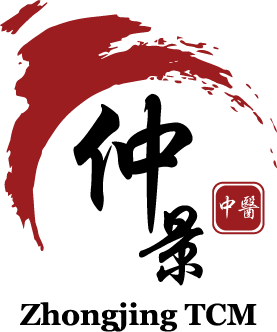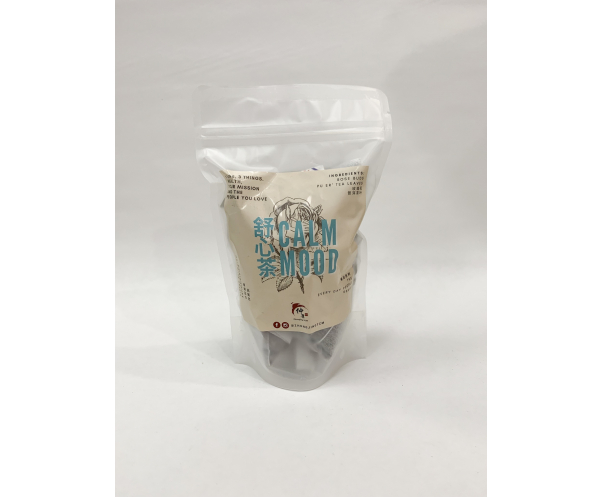Author: Physician Patricia Wang | April 2021 | Zhongjing TCM
In today’s fast paced world where rest has become a luxury, we often neglect our bodies and experience some minor discomforting symptoms from time to time. Headache is one such symptom that has bothered almost everyone at some point in their lives. For some, headaches can just be uncomfortable and bothersome, but for others, the pain can be very intense and disabling. According to a 2003 study in Singapore, the prevalence of headache was 82.7% among 2096 respondents. In addition, some studies have found that the incidence of headache in women (88%) is much higher than that in men (69%). Headache is a symptom that can only be perceived subjectively and it may often be difficult to describe exactly what you are feeling. It is an extremely common symptom seen in clinical practice and there can be many causes. Headache itself can be a condition or it can be a symptom of an underlying disease. It can even be a warning sign to more sinister diseases so it is important to rule them out. For the majority of headaches that occur, the exact mechanism is not yet clearly understood.
What is TCM's understanding of headache?
In TCM, the head is where all Yang meridians converge. Meridians are channels where our life energy known as Qi and Blood flow. Qi and Blood from all our organs flow through these Yang meridians to nourish the head and the brain. Headache can occur when external pathogenic factors enter the body via the head, disrupting the flow of Qi, or due to malnourishment of the head caused by different factors, or due to blockage of meridians and vessels. Headaches are generally classified into two major categories - exogenous and endogenous headaches. Exogenous headaches are caused by the invasion of external pathogenic factors to the head. The common syndromes we see are wind-heat, wind-cold and dampness. Endogenous headaches are caused by imbalances in the internal organs. They are very common and can be a result of an acute or chronic condition. Endogenous headaches can be caused by congenital insufficiency, presence of Phlegm or Blood stasis that block the flow of Blood to the head, or emotional disturbances like anger and anxiety, or stress which can lead to Liver Yang rising to the head and disrupting the flow of Qi as well.
Types of Headache
Below are the various syndromes of headache with their respective symptoms, to allow you to have a better understanding of how headache is diagnosed in TCM. Headache might seem like a very straightforward symptom, but in TCM, we treat it based on identifying the syndrome. Hence, treatment methods and prescriptions might differ every time you go to a TCM physician for a headache episode. Nevertheless, we want to emphasize that this information is just for educational purposes. We do not encourage you to self-diagnose and prescribe medications for yourself or others. Trying to decipher these complicated TCM theories and syndromes might end up triggering or worsening your headache instead! It is best to let your TCM practitioner decide the treatment methods best suited for your condition.
Syndrome | Symptoms |
Wind-Cold | Severe headache, tightness around the head, pain extending to the neck and upper back, often triggered by exposure to cold environments. Accompanying symptoms: Aversion to cold, lack of thirst, craves for warmth and often tries to cover up the head and neck regions. |
Wind-Heat | Severe headache, often described as distending pain with a splitting sensation. Accompanying symptoms: Flushed face, red eyes, aversion to wind, fever, thirst, dark urine, constipation. |
Wind - Dampness | Headache with a heavy sensation. Accompanying symptoms: Heavy feeling in the limbs, chest tightness, poor appetite, discomfort during urination, loose stools. |
Hyperactive Liver Yang | Headache with dizziness, often triggered by stress. Accompanying symptoms: Irritability, insomnia, dry mouth, bitter taste in mouth, flushed face, ear ringing (tinnitus), constipation. |
Qi and Blood Deficiency | Intermittent dull headache worsened by lack of rest or worsens in the afternoon, dizziness. Accompanying symptoms: Fatigue, blurred vision, weakness, heart palpitations, easily startled, bland taste in mouth, poor appetite, pale skin |
Phlegm - Dampness | Headache with a heavy sensation. Accompanying symptoms: Chest tightness, abdominal bloating, nausea, poor appetite, presence of phlegm, heaviness in limbs. |
Kidney Deficiency | Distending pain with an empty sensation, dizziness. Accompanying symptoms: Ear ringing (tinnitus), forgetfulness, nocturnal emissions, lower backache, weakness in lower limbs. |
Acupuncture for Headache
In TCM, headaches are ultimately a result of a blockage of the local meridians and disruption in the flow of Qi and Blood. Hence, acupoints are selected with the main aim at restoring the flow of Qi and Blood in the meridians. Additional acupoints will also be selected according to the headache syndrome. For chronic headaches, we have different treatment protocols during the active and remission periods. During the active period, treatment will focus on pain relief and more vigorous acupuncture techniques might be used. During remission periods, treatment will focus on correcting the organ imbalances, with the aim of reducing the severity and frequency of the attacks. Treatment during remission phases is equally important as preventive measures provides a more long-term solution rather than short-term pain relief.
Acupressure Massage
We have a saying that treatment only accounts for 30% of the cure, while the remaining 70% depends on the patient’s daily lifestyle habits. One method that you can include in your daily routine would be acupressure massage. This should only be used for benign primary headaches, which happens to be the type we commonly see. An important thing to take note is that this can only provide temporary relief from the pain. If the pain persists or recurs frequently, you should still seek advice from a medical professional.
| Feng Chi (GB20) Press both hands against the ears, then naturally open ten fingers to hold the head. Move your thumbs slightly upwards, until you feel a depression on each of the intersection lines between the neck and the hairline. |
| Tai Yang (EX-HN5) This is located at the temples. Use your middle finger to find the depression at both temples. |
| Shuai Gu (GB8) This is located at the sides of the head, around 1.5 inch above the tips of the ears. |
| He Gu (LI4) Disclaimer: This must not be used during pregnancy. This is located between the first and second palm bones. Find the midpoint of the second palm bone and press down on the fleshy area right beside it. Alternatively, place your thumb and index finger closely together and this acupoint is located right on the highest point of the fleshy part between your thumb and index finger. |
| Ben Shen (GB13) This is located 0.5 inch above the front hairline and 3 inches away from the midline. |
Direction: It is recommended to perform acupressure massage in a seated position. Choose 3-4 acupoints and massage each acupoint with your thumb or middle finger for 1-3 minutes. Apply mild to moderate pressure on each acupoint, you should not be feeling pain or discomfort from the massage. If you are experiencing a headache attack, you can extend the duration to 5-10 minutes.
*Caution: If you are unsure, do consult a TCM practitioner for advice before carrying out the massage for yourself or others.
Herbal Recipes
Many would be tempted to take pain-killers to relieve a headache but is medication the only way to resolve it? Try these herbal recipes for your headaches next time. These recipes are suited for vegetarians as well.
Chrysanthemum Porridge

Mulberry Leaf, Chrysanthemum and Fermented Soybean Porridge

Soothing Liver Rose Porridge

Lifestyle Tips to Manage Headaches
Exercising regularly can help to improve your headache symptoms. Our body releases endorphins during exercise. These hormones, famously known as the happy hormones, are the natural pain-killers produced by our body. They stimulate feelings of pleasure and allow you to stay in a positive mood. These effects can last 1-2 hours after an exercise session. You can consider engaging in the following exercises:
- Aerobic exercises: These include jogging, cycling or brisk-walking. These moderate to high intensity exercises can help to reduce migraines. However, do take note not to engage in exercises that are too vigorous as they might trigger or worsen migraines instead.
- Yoga: Practicing yoga can help to reduce stress levels. Research7 has shown that those practicing yoga 5-6 times a week had fewer migraine attacks than those who are undergoing regular migraine treatment.
- Taichi: Taichi involves a series of slow, coordinated movements, incorporating breathing and meditation. It is considered an exercise of low to medium intensity. Practicing Taichi can increase one’s balance and flexibility, and also promote physical and mental relaxation. In a study8 done on subjects with tension headache, their headaches were reduced after 15 weeks of Taichi sessions.
Thanks to our hot weather, it is tempting to shut ourselves indoors with the aircon at full blast all day. However, this hot weather results in our pores being readily open, especially vulnerable to Wind and Cold invasion from our surroundings
It is also very important to maintain a positive mood. Having frequent mood swings or throwing tempers can lead to Liver Qi stagnation and internal Wind, resulting in headaches. While stress is often a part of life, there are ways to reduce our stress levels, such as listening to music, engaging in outdoor activities, drinking tea, or enjoying the greenery. We all have different approaches to stress relief; you just have to find the right one for yourself. Ensuring sufficient sleep is also helpful in reducing headaches.
If you are often plagued by headaches, keeping a record might be valuable in helping you and your physician/doctor diagnose your condition accurately. Keep a record of the characteristics of each headache episode, including food or medicine taken before the attack, possible triggers, preceding symptoms, date and time of attack, duration, intensity and characteristic of pain, and relief measures. These records can also help you understand the pattern of your headache, in hope of reducing the episodes.
Everyone’s cervical spine will show a certain degree of degeneration. It is the natural wear-and-tear that happens as we age. While we cannot prevent degeneration, we can definitely slow down the process by practising good habits. This includes having proper posture, sufficient rest, good physical training and regular stretching. It is up to us to take charge of our physical well-being, so that we can continue to do the things we love.
It may be difficult to start making these lifestyle changes as habits do take time to cultivate. However, once you establish these habits into your daily routine, these may help with neck discomfort, or even prevent it in the future.
References
- Ho KH, Ong BK. A community-based study of headache diagnosis and prevalence in Singapore. Cephalalgia. 2003 Feb;23(1):6-13.
- Eric Chu CP. Long-term relief from tension-type headache and major depression following chiropractic treatment. Journal of Family Medicine and Primary Care. 2018, 7 (3).
- Disease Management Project: Publications. Cleveland Clinic.2010-08-01
- [Levin, Morris; Baskin, Steven M.; Bigal, Marcelo E. Comprehensive Review of Headache Medicine. Oxford University Press. 2008: 60. ISBN 0-19-536673-5.]
- [Clinch C. Chapter 28. Evaluation & Management of Headache - CURRENT Diagnosis & Treatment in Family Medicine, Third Edition (Lange Current Series): Jeannette E. South-Paul, Samuel C. Matheny, Evelyn L. Lewis:. McGraw-Hill. 2011. ISBN 9780071624367]
- Handbook of Clinical Neurology. ISBN 978-0-444-52139-2
- Sathyaprabha, T. N., Kisan, R., Adoor, M., Nalini, A., Kutty, B. M., ChindandaMurthy, B. T., Sujan, M. U., Rao, R., & Raju, T. R. (2014). Effect of Yoga on migraine: A comprehensive study using clinical profile and cardiac autonomic functions. International Journal of Yoga, 7(2), 126. https://doi.org/10.4103/0973-6131.133891
- Abbott, R. B., Hui, K.-K., Hays, R. D., Li, M.-D., & Pan, T. (2007). A Randomized Controlled Trial of Tai Chi for Tension Headaches. Evidence-Based Complementary and Alternative Medicine, 4(1), 107–113. https://doi.org/10.1093/ecam/nel050
- 石学敏主编,普通高等教育“十五”国家级规划教材 , 针灸学[M],中国中医药出版社.











